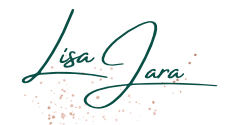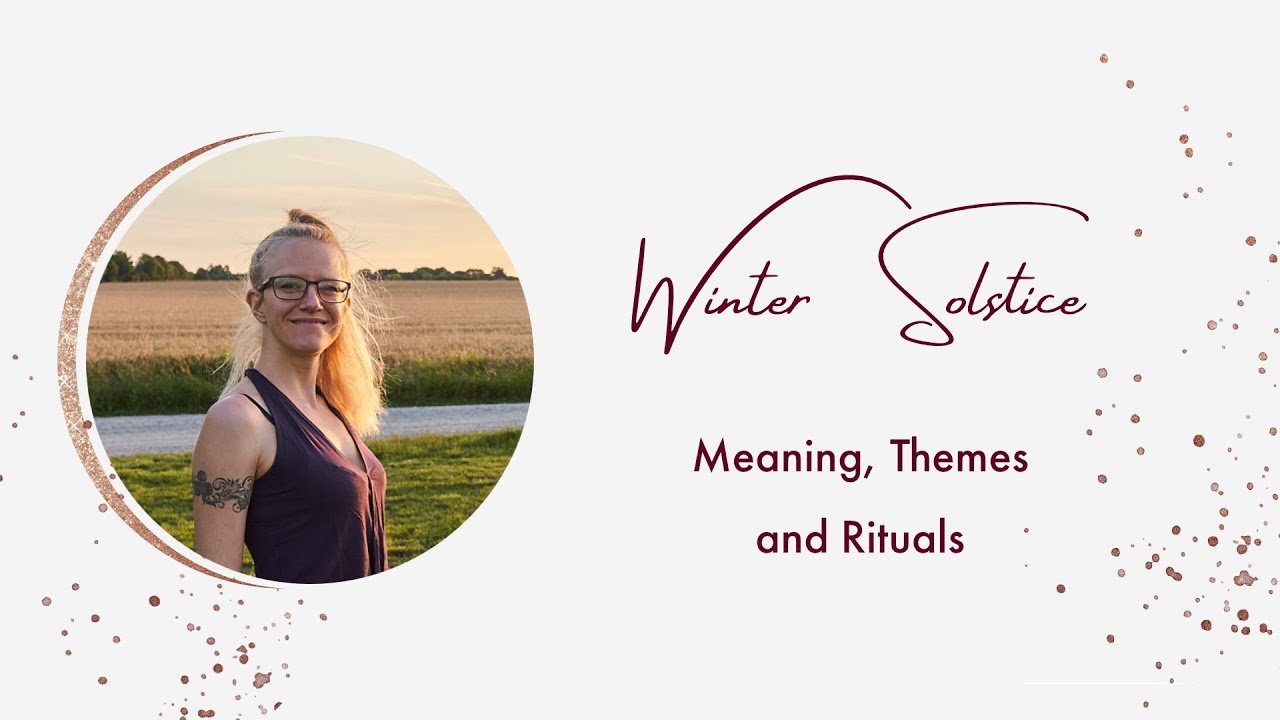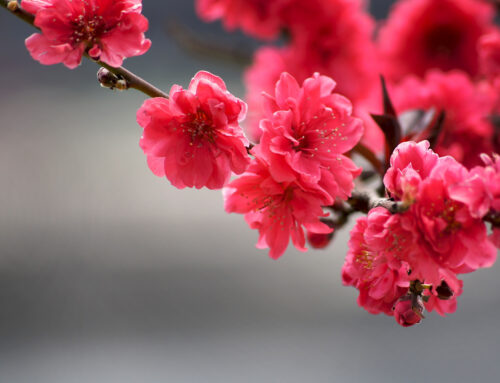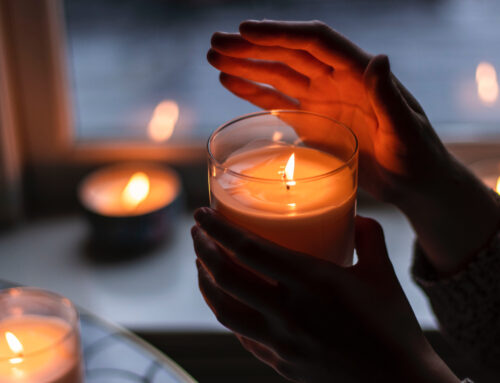Winter Solstice (also known as Yule) is one of the eight festivals in the Wheel of the Year, which in its entirety represents the Cycle of Life. In this cycle of becoming and unbecoming, death and rebirth, Winter Solstice marks the lowest point in a cycle, where the Old is released (Death) to make room for the New ((Re)Birth).
Its opposite is Summer Solstice, symbolising the peak of growth, after which the time of maturation begins.
When do we celebrate Winter Solstice?
Winter Solstice marks the longest night and shortest day of the year and usually happens on December 21st in the Northern Hemisphere (June 21st in the Southern Hemisphere). The exact time differs a little from year to year, because it depends on the moment where the sun reaches his lowest point on the horizon. In some years, this only happens on December 22nd (between June 20th and June 22nd in the Southern Hemisphere), and it also depends on the time zone you live in.
Winter Solstice is the astronomical beginning of winter.
Why do we celebrate Winter Solstice?
Winter Solstice is the darkest moment we get to in the course of a year, and holds a glimmer of hope at the same time – for it is also the moment when the light is reborn. From now on, the days will become a little longer each day and we can look forward to a new spring.
We are at a turning point which invites us to pause and reconnect with our inner light. With the strength and life force stored inside of us, even though we sometimes experience moments where it seems we don’t have much strength left.
It’s a moment of quietude and stillness, because the word “solstice” means “standstill of the sun”. The sun has reached his lowest point on the horizon and remains there for a moment, bevor climbing back up the horizon to his highest point (at Summer Solstice on June 21st (Northern Hemisphere) or December 21st (Southern Hemisphere)).
What is the energetic quality of this time?
Winter Solstice is a natural turning point in the rhythm of the year, which also shows up in our lives. In fact, the energetic quality of Winter Solstice is similar to that of Dark Moon (when the Moon is invisible in the night sky) or menstruation (if you have a menstrual cycle). It’s the lowest and darkest point of our whole experience, we’re usually more inward focused, connected to our essence, and can consciously use this time to replenish and recharge our batteries.
We can observe this in Nature, too, which seems to be in deep slumber: The trees are bare, have pulled their life force back into their roots, snow and ice might cover the land, it’s dark and cold. And yet, we sense that something’s preparing itself deep inside, beneath the surface of the Earth.
Because while Nature appears to be resting, trees and plants actually deepen their roots, for only deep and stable roots allow new growth to happen sustainably next spring. The fallen leaves are being composted and dissected into their smallest components by microorganisms, so they will be available as nutrients again next year.
We can consciously experience the quality of this time by decorating with candles, wreaths and branches, baking cookies, telling stories, reading fairy tales, oracle reading to get a glimpse of what our future might hold – and by also taking some time to ourselves (in whatever way that is possible for you).
How can you honour the quality of this time?
We often believe it needs to be something big and significant to celebrate a certain time or period of life, but it is the little daily rituals that make the difference. Here are a few ideas to honour this time in your day-to-day life:
- Create your own Winter Altar: Prepare a corner in a room, a little table or simply a bowl and decorate them with everything that reminds you of winter: e.g., branches from evergreen trees, stars, nuts, orange peel and of course candles to represent the rebirth of the sun’s light. Take a few moments here and there, light a candle, enjoy the silence and connect to the winter energy.
- Strengthening Nutrients: The foods we’ve harvested and preserved during harvest season now serve as nourishment for the cold winter months. The energy of summer and the summer sun is stored in them to nurture us now, so dishes with potatoes, winter veggies, root veggies or apples are ideal, for example stews.
- Decorating with Evergreen Branches: Even hundreds of years ago, people already used to decorate their huts and homes with ivy, juniper or mistletoe, as a reminder of Nature. Since Nature is covered in snow outside, this was a way to invite it into our home.
- Incense and Smudging: Nothing belongs to this time of year as much as incense! Sage to cleanse, camphor to clear or frankincense to bless are connected to this time. Smudging is also an integral part of the tradition of the Twelve Holy Nights – a ritual celebrated in December to consciously close the old year before inviting in the new.
The meaning and themes of Winter Solstice
Winter Solstice symbolises the process of Death and (Re)Birth like nothing else, so its themes are all about the duality of reflection and processing versus hopes and dreams.
Retreating, Silence, Introspection
Even though the light has been reborn, it will take a while before we are filled with its strength for the new year to come. So right now isn’t the time for New Year’s Resolutions, instead it’s all about retreating inward, our personal hibernation so to speak. This can last well into February, which, if you ask me, is the reason why so many Resolutions are so hard to maintain in the first month of the year.
And just like Nature below the surface of the Earth, there’s a lot happening deep inside ourselves. Our subconscious is busy processing, composting, re-arranging and planting new seeds – all of that basically without us having to consciously DO anything for it. Silence and patience are the themes of the day.
It’s a little like the first trimester of pregnancy, when outwardly you can’t see much, but inside a whole new human being is created. No wonder people feel knackered at this time, their bodies are working at full speed, after all!
Patience and Perseverance
For the seed to develop roots and strengthen them, however, two things are needed now: patience and perseverance. The grass doesn’t grow faster if you pull at it.
But in our modern times, we’ve often forgotten to consciously cultivate these two qualities in our life. We’re always “on”, available for others (or they for us), can buy pretty much anything anytime, and are always on the lookout for the next dopamine hit, resulting from instant gratification.
But “All good things will come to those who wait.” And so we need to make sure we rest and relax during this season, instead of distracting ourselves with Social Media, shopping, Netflix, working etc.
Like menstruation in a menstrual cycle (or Dark Moon in the moon cycle) this is a time to do nothing for a while and allow your internal batteries to recharge.
Hope and Peace
The light is reborn in the night of the Winter Solstice and offers us hope – what does hope mean to you, what do you hope for? Do you feel hopeful?
Or: How can you strengthen your faith in life and trust that every dark night is followed by a new morning? That you have the ability to draw all the good things into your life that you wish for?
What – or who – needs forgiving and letting go to make (inner) peace? Because forgiveness isn’t for someone else, it’s for ourselves.
Welcoming the Light
Right now, it’s hardly noticeable that the days become longer again, so fire is an important symbol for this time. Whether as candles, a stove, a fireplace or hearth – fire gives us hope and reminds us that we, too, carry this inextinguishable light within.
What do you long for, what inspires you, what lights you up?
It’s not even about brimming with energy or your inner fire burning wildly all the time, it’s completely okay for it to rest and just have a gentle glow. Sometimes our light simply wants to be expressed in a quiet joy, where you know “It’s all good as it is, actually.”
Winter Solstice in the Cycle of Life
The wisdom of the individual festivals of the Wheel of the Year can always be applied to our bigger cycles of life, which we move through as humans – no wonder, since they represent the Cycle of Life.
Winter Solstice marks the darkest moment in a year, a moment of silence, retreat and low energy, comparable to midnight (or menstruation or Dark Moon).
If we think of a human life, it refers to the phase from about 80 years until death, which becomes more and more present. By now we begin to consciously think about dying, to reflect on our life and consider what’s truly important to us for the remainder of the time we have in this body.
Now is the last opportunity to settle and close what needs closing and to make peace with our experience in life. We need to make final arrangements regarding our inheritance and legacy so that we can die in peace and dignity.
At the same time, Winter Solstice represents the beginning of new life: it’s the moment of conception. In the darkness and protection of the womb, a process is set in motion, the vision of a new human being. Not yet visible to our eyes and the outside world, something new has begun and is going to grow and mature over the coming weeks and month.
Unfortunately, our Western society is very much disconnected from the cycles of Nature, where death is an ever-present part of Life itself. This doesn’t always refer to physical death, though, women and people who bleed die an (ego) death every month (menstruation or Dark moon), which is their regular opportunity to shed the Old and invite in the New. But our society loves to sweep this fact under the carpet and is downright death-averse …
How can you celebrate Winter Solstice?
Since Nature is in hibernation at this time and does all the processing, deepening and composting beneath the Earth’s surface, we humans are invited to do the same.
So the rituals of this time are all about going within, digesting experiences, strengthening our roots and connecting to our inner light.
Personal Rituals
- Grounding and Rooting: Like the trees and plants which have drawn their juices back into their roots to deepen and strengthen, you, too, can connect with your own roots. Light a candle, take a few deep breaths, become present in your body. Bring your awareness to the body parts that touch the ground. See or sense your roots making their way into the Earth, allow them to deepen and widen as they like, all the way down to the red core of Mother Earth. Connect with this red Earth energy and draw it upwards into your body. The Earth supports and nourishes you, always here when you need her!
- Yule Candle: Buy or make yourself a beautiful candle (it shouldn’t be too small!). Light the candle on Winter Solstice (also known as Yule festival) to honour the rebirth of the light. This Yule Candle is a lucky candle full of good energy, that shall support you through the coming year. You can light it on special occasions or when you need a glimmer of hope.
Next year, at the beginning of Advent season, you create a wreath or plate with this Yule Candle in the centre and four more candles around it. It’s similar to an Advent wreath, but here’s the difference: For the First Sunday of Advent, you light all four candles and the Yule Candle of the previous year. For the Second Sunday of Advent, you light only three candles and the Yule Candle of the previous year, and so on. This symbolises how the light is waning and we’re moving towards the darkest moment of the year.
For the next Advent season you buy or make a new Yule Candle for the upcoming year and use the old Yule Candle to light it on Winter Solstice. You can burn the old candle down and the new one will stay with you through the next year. - Twelve Holy Nights: The Twelve Holy Nights are the time “in-between the years” and a wonder-full tradition to consciously close the old year and invite in the new. These twelve nights are all about reflecting on the old year, releasing, honouring lessons and experiences and then planting the seeds for whatever you wish to call in more of in the upcoming year. HERE you’ll find a detailed article about this magical-mystical time and HERE an opportunity to journey the “Mystical Twelve Holy Nights” together with me.
Group Rituals
- Being together: Come together to simply BE. Maybe you play some music (and intentionally listen to it), or make wreaths from evergreen plants, enjoy cookies and hot beverages and talk about what the year has brought for everyone present. What was your biggest lesson this year and what would like to invite in for next year?
- Telling Stories, Myths and Fairy Tales: Like people used to withdraw into their huts and gather around the fireplace to listen to stories, myths and fairy tales in former times, we can enjoy this just as much.
Come together and tell or read each other stories. Imagine how a few hundred years back people would huddle together while the wind raged around the hut … they would hear the soft neighing of horses in the wind. Or dogs barking, whips lashing and horns. And they knew: The Wild Hunt was roaming the lands! Odin, the All-Father with his troupe of ghosts and demons from the Otherworld. During the time of the Twelve Holy Nights, he and his wife Frigg, also known as Mother Hulda, lead the party through the lands and it was dangerous to be outside, because you might get kidnapped and be lost forever …

Do you have any questions or know other Winter Solstice rituals that you love to celebrate?
Send me a message, I‘d love to learn more!






